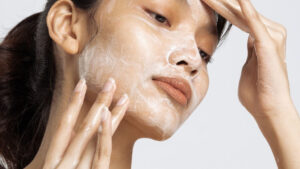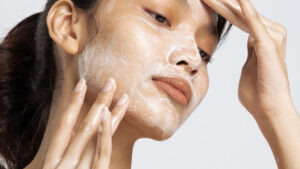In an industry saturated with marketing claims, miracle ingredients, and ever-changing trends, navigating the world of skincare can feel overwhelming and confusing. Social media influencers promote 12-step routines while beauty counters overflow with products promising instant transformation. Yet beneath the marketing noise lies a fascinating world of dermatological science that can guide us toward truly effective skincare practices. Understanding how your skin actually works—and what ingredients are proven to support its health—is the key to developing a skincare routine that delivers real, lasting results.
Your skin is far more than a simple protective barrier. It’s your body’s largest organ, a complex ecosystem of cells, proteins, and beneficial microorganisms working together to protect you from environmental threats while maintaining moisture, temperature regulation, and immune function. When you understand the intricate biology of your skin, you can make informed decisions about products and practices that support its natural functions rather than disrupting them.
The skincare industry generates billions of dollars annually, yet many people struggle with persistent skin issues despite trying countless products. This disconnect often stems from a fundamental misunderstanding of how skin works and what it actually needs to thrive. By grounding our approach in scientific evidence rather than marketing promises, we can cut through the confusion and build skincare routines that are both effective and sustainable.
Understanding Your Skin’s Complex Architecture
Your skin consists of three primary layers, each with distinct functions and characteristics that influence how skincare products interact with your complexion. The outermost layer, the epidermis, serves as your body’s first line of defense against environmental stressors. Within the epidermis lies the stratum corneum, often called the skin barrier, which consists of dead skin cells held together by lipids in a structure resembling bricks and mortar.
This skin barrier is absolutely crucial for healthy skin function. When intact, it prevents water loss while keeping irritants, allergens, and harmful microorganisms from penetrating deeper into your skin. The stratum corneum is composed of approximately 15-20 layers of corneocytes (dead skin cells) embedded in a matrix of ceramides, cholesterol, and fatty acids. This lipid matrix makes up about 10-15% of the stratum corneum but accounts for its barrier function.
Beneath the epidermis lies the dermis, where collagen and elastin fibers provide structure, strength, and elasticity to your skin. The dermis houses blood vessels, nerve endings, hair follicles, and sebaceous glands. It’s also where most of the aging process occurs, as collagen production naturally decreases by approximately 1% per year after age 20, and elastin fibers begin to fragment and lose their spring-like properties.
The deepest layer, the hypodermis or subcutaneous tissue, consists primarily of fat cells that provide insulation and cushioning. While skincare products don’t typically penetrate this deeply, the health of all three layers is interconnected, and supporting the upper layers can have positive effects throughout the skin’s structure.
The Science of Skin Aging: Understanding What Changes Over Time
Skin aging occurs through two primary mechanisms: intrinsic aging (the natural aging process determined by genetics) and extrinsic aging (damage caused by external factors, primarily UV radiation). Understanding these processes is essential for developing effective anti-aging strategies.
Intrinsic aging is characterized by gradual changes in skin structure and function. Collagen synthesis slows down, existing collagen fibers become cross-linked and less flexible, and the skin’s ability to retain moisture decreases. Cell turnover also slows from approximately 28 days in young adults to 45-60 days in mature skin, leading to a buildup of dead skin cells that can make the complexion appear dull and uneven.
Extrinsic aging, particularly photoaging caused by UV radiation, accounts for up to 90% of visible signs of aging in sun-exposed areas. UV radiation generates free radicals that damage cellular structures, break down collagen and elastin, and alter DNA in skin cells. This damage accumulates over time, leading to wrinkles, age spots, loss of elasticity, and an increased risk of skin cancer.
The good news is that while we cannot stop intrinsic aging, we can significantly slow extrinsic aging through protective measures and evidence-based skincare interventions. Research consistently shows that daily sun protection is the single most effective anti-aging strategy available, far surpassing any topical treatment in preventing future damage.
Building Blocks of Effective Skincare: Evidence-Based Ingredients
Not all skincare ingredients are created equal. While the beauty industry regularly introduces new “miracle” ingredients, decades of scientific research have identified several key compounds with proven benefits for skin health. Understanding these ingredients and their mechanisms of action can help you make informed choices about which products deserve a place in your routine.
Retinoids represent perhaps the most thoroughly researched and effective anti-aging ingredients available. These vitamin A derivatives work by normalizing cellular turnover, stimulating collagen production, and improving skin texture and tone. Prescription tretinoin remains the gold standard, with extensive clinical data supporting its efficacy for treating acne, reducing fine lines, and improving photodamage. Over-the-counter retinol offers similar benefits with less irritation potential, though it must be converted to retinoic acid in the skin to become active.
The key to successful retinoid use lies in proper introduction and realistic expectations. Start with the lowest concentration available, use it only 2-3 times per week initially, and gradually increase frequency as your skin builds tolerance. Most people experience some initial irritation, including redness, peeling, and sensitivity, but these effects typically subside within 4-6 weeks of consistent use. Results become apparent after 8-12 weeks of regular use, with continued improvement over months and years.
Vitamin C, specifically L-ascorbic acid and its stable derivatives, functions as a potent antioxidant while stimulating collagen synthesis. When applied topically, vitamin C helps neutralize free radicals, brighten skin tone, and improve the appearance of fine lines and dark spots. However, vitamin C is notoriously unstable and can oxidize when exposed to light, air, or certain pH levels, rendering it ineffective.
Look for vitamin C products in dark, airtight packaging with concentrations between 10-20% for optimal effectiveness without excessive irritation. Magnesium ascorbyl phosphate and sodium ascorbyl phosphate are more stable alternatives that convert to active vitamin C in the skin, though they may be less potent than pure L-ascorbic acid.
Alpha hydroxy acids (AHAs) and beta hydroxy acids (BHAs) serve as chemical exfoliants that help accelerate cellular turnover and improve skin texture. Glycolic acid, the most extensively studied AHA, has the smallest molecular size, allowing it to penetrate deeply and effectively dissolve the bonds between dead skin cells. Lactic acid offers similar benefits with potentially less irritation, while also providing mild hydrating properties.
Salicylic acid, the primary BHA used in skincare, is oil-soluble, making it particularly effective for penetrating pores and addressing acne and blackheads. It also has anti-inflammatory properties that can help calm irritated skin. Both AHAs and BHAs increase photosensitivity, making daily sun protection absolutely essential when using these ingredients.
The Critical Importance of Sun Protection
If you implement only one skincare practice, it should be daily, broad-spectrum sun protection. UV radiation is responsible for the vast majority of premature skin aging and significantly increases skin cancer risk. Despite widespread awareness of sun damage, many people still don’t apply sunscreen correctly or consistently enough to achieve adequate protection.
Effective sun protection requires understanding both UVA and UVB radiation. UVB rays primarily affect the epidermis and are responsible for sunburns, while UVA rays penetrate deeper into the dermis and cause long-term damage including wrinkles, age spots, and loss of elasticity. UVA radiation remains constant throughout the day and can penetrate through windows, making protection necessary even during indoor activities near windows.
The SPF rating system measures protection against UVB radiation only. SPF 30 blocks approximately 97% of UVB rays, while SPF 50 blocks about 98%. Higher SPF numbers provide diminishing returns, and no sunscreen blocks 100% of UV radiation. More importantly, most people apply only 25-50% of the recommended amount of sunscreen, significantly reducing the actual protection achieved.
For optimal protection, apply approximately 1/4 teaspoon of sunscreen to your face and neck, ensuring even coverage including often-missed areas like the ears, eyelids, and around the hairline. Reapplication every two hours is crucial for maintaining protection, especially if you’re sweating or spending time outdoors.
Physical sunscreens containing zinc oxide and titanium dioxide work by reflecting UV radiation away from the skin, while chemical sunscreens absorb UV energy and convert it to heat. Both types can be effective when properly formulated and applied, though physical sunscreens may be preferable for sensitive skin or those concerned about potential hormonal effects of certain chemical filters.
Moisturization and Barrier Function: The Foundation of Healthy Skin
Proper moisturization is fundamental to skin health, yet many people misunderstand how moisturizers work and what their skin actually needs. Effective moisturization involves three key mechanisms: preventing water loss (occlusion), attracting water to the skin (humectants), and repairing the skin barrier (emollients).
Occlusive ingredients like petrolatum, mineral oil, and dimethicone form a barrier on the skin’s surface that prevents trans-epidermal water loss. While these ingredients are often criticized for being “synthetic” or “pore-clogging,” research shows that properly formulated products containing these ingredients are non-comedogenic and highly effective at maintaining skin hydration.
Humectants such as hyaluronic acid, glycerin, and sodium PCA attract water from the environment and deeper layers of the skin to the outer surface. Hyaluronic acid has gained particular attention for its ability to hold up to 1,000 times its weight in water, though this impressive capacity can actually work against you in very dry environments where it may pull moisture from your skin rather than the air.
Emollients including ceramides, fatty acids, and cholesterol help repair and strengthen the skin barrier while providing a smooth, soft feel. Ceramides are particularly important as they make up about 50% of the skin’s barrier function. Products containing ceramides that match the skin’s natural ceramide profile can help restore barrier function in compromised or sensitive skin.
The best moisturizers combine all three mechanisms in formulations appropriate for your skin type and environmental conditions. Oily skin may benefit from lighter, water-based formulations with humectants and light emollients, while dry skin typically requires richer formulations with additional occlusive ingredients.
Customizing Your Routine: Skin Types vs. Skin Conditions
Understanding the difference between skin types and skin conditions is crucial for developing an effective skincare routine. Your skin type—normal, dry, oily, or combination—is largely determined by genetics and refers to the amount of oil your skin naturally produces. Skin conditions such as acne, rosacea, hyperpigmentation, or sensitivity can affect any skin type and may require specific treatment approaches.
Oily skin produces excess sebum, leading to a shiny appearance, enlarged pores, and increased susceptibility to acne. However, oily skin also tends to age more slowly due to the natural moisturizing effects of sebum. People with oily skin often over-cleanse or use harsh products in an attempt to control oil production, which can actually stimulate more oil production and compromise the skin barrier.
Effective care for oily skin involves gentle cleansing with products that remove excess oil without stripping the skin, followed by lightweight, non-comedogenic moisturizers. Ingredients like niacinamide can help regulate oil production, while salicylic acid can keep pores clear and reduce shine.
Dry skin lacks adequate oil production, leading to tightness, flaking, and potential sensitivity. Environmental factors such as low humidity, harsh weather, and over-cleansing can exacerbate dryness. Dry skin requires gentle, cream-based cleansers and rich moisturizers with occlusive and emollient ingredients. Avoiding harsh scrubs and limiting the use of active ingredients can help prevent further irritation.
Combination skin features both oily and dry areas, typically with an oily T-zone (forehead, nose, and chin) and drier cheeks. This skin type may benefit from using different products on different areas of the face or choosing products specifically formulated for combination skin.
The Role of Diet and Lifestyle in Skin Health
While topical skincare products are important, skin health is also significantly influenced by internal factors including diet, hydration, sleep, and stress management. Understanding these connections can help you take a holistic approach to achieving your best possible skin.
The relationship between diet and acne has been extensively studied, with particular attention to high-glycemic foods and dairy products. Foods that rapidly raise blood sugar levels can trigger hormonal changes that increase oil production and inflammation, potentially worsening acne. Some studies suggest that dairy consumption, particularly skim milk, may be associated with increased acne severity, possibly due to hormones naturally present in milk or the way dairy affects insulin levels.
Antioxidant-rich foods can support skin health by helping neutralize free radicals that contribute to aging and inflammation. Colorful fruits and vegetables, nuts, seeds, and fatty fish provide vitamins C and E, selenium, zinc, and omega-3 fatty acids that support skin function. However, while a healthy diet supports overall skin health, dramatic improvements in specific skin conditions typically require targeted topical treatments or medical intervention.
Hydration plays a crucial role in skin function, though the relationship isn’t as straightforward as many believe. While severe dehydration can affect skin health, drinking excessive amounts of water won’t necessarily improve your complexion. Your skin’s hydration levels are more directly influenced by the health of your skin barrier and the products you apply topically.
Sleep quality significantly impacts skin health through several mechanisms. During deep sleep, your body increases production of growth hormone, which is essential for tissue repair and collagen synthesis. Sleep deprivation can increase cortisol levels, leading to inflammation and potentially worsening skin conditions like acne and eczema. Poor sleep also affects blood flow to the skin, contributing to a dull, tired appearance.
Chronic stress triggers the release of cortisol and other stress hormones that can increase oil production, impair skin barrier function, and delay healing. Stress can also worsen inflammatory skin conditions and may contribute to premature aging. Implementing stress management techniques such as regular exercise, meditation, or therapy can have positive effects on both your overall health and skin appearance.
Common Skincare Mistakes and How to Avoid Them
Even with the best intentions, many people unknowingly sabotage their skincare efforts through common mistakes that can irritate skin, waste money, or prevent them from seeing results. Understanding these pitfalls can help you avoid them and maximize the effectiveness of your routine.
Over-cleansing is one of the most prevalent skincare mistakes, particularly among people with oily or acne-prone skin. Washing your face more than twice daily or using harsh cleansers can strip away natural oils, compromise the skin barrier, and actually trigger increased oil production. Stick to gentle cleansing twice daily, and choose products appropriate for your skin type.
Introducing too many new products at once makes it impossible to determine which products are helping or causing problems. It also increases the risk of irritation and adverse reactions. When adding new products to your routine, introduce them one at a time, spacing new additions at least a week apart to allow your skin to adjust.
Expecting immediate results from skincare products often leads to disappointment and product-switching before ingredients have time to work. Most active ingredients require 6-12 weeks of consistent use to show noticeable improvements. Skin cell turnover takes approximately 28 days in young adults and longer in mature skin, so patience is essential for seeing results.
Neglecting the neck and décolletage is a common oversight that can become more apparent with age. The skin in these areas is thinner and more prone to sun damage than facial skin, yet many people stop their skincare routine at the jawline. Extend your cleansing, treatment products, moisturizer, and sunscreen to these areas for comprehensive care.
Using expired products can reduce effectiveness and potentially cause irritation or infection. Most skincare products have a shelf life of 12-24 months after opening, indicated by a small jar symbol with a number and “M” on the packaging. Store products in cool, dry places away from direct sunlight to maximize their shelf life.
Building Your Evidence-Based Skincare Routine
Creating an effective skincare routine doesn’t require dozens of products or complicated multi-step processes. A simple, consistent routine using proven ingredients will always outperform an elaborate routine used sporadically. Focus on the fundamentals: gentle cleansing, targeted treatments, moisturization, and sun protection.
Your morning routine should prioritize protection and preparation for the day ahead. Start with a gentle cleanser if you have oily skin or simply rinse with water if your skin is dry or sensitive. Apply any treatment serums such as vitamin C, followed by moisturizer and broad-spectrum sunscreen. Keep morning routines simple and quick to encourage consistency.
Evening routines offer the opportunity to use active ingredients and focus on repair and renewal. Double cleansing—using an oil-based cleanser followed by a water-based cleanser—can effectively remove makeup, sunscreen, and daily buildup without over-cleansing. This is when you would apply prescription treatments like tretinoin or over-the-counter actives like retinol or AHA/BHA products.
Always introduce active ingredients gradually, starting with lower concentrations and less frequent use. Many people experience initial irritation when beginning retinoids or chemical exfoliants, but this often subsides with continued use as the skin builds tolerance. However, persistent irritation, burning, or worsening of skin conditions warrants discontinuing the product and potentially consulting a dermatologist.
When to Seek Professional Help
While a well-designed skincare routine can address many common skin concerns, some conditions require professional evaluation and treatment. Persistent acne, suspicious moles, severe sensitivity reactions, or skin conditions that don’t respond to over-the-counter treatments may benefit from dermatological care.
Dermatologists can prescribe stronger medications, perform professional treatments, and rule out underlying medical conditions that might be affecting your skin. They can also help you navigate complex skin conditions and develop personalized treatment plans based on your specific needs and goals.
Remember that achieving healthy, radiant skin is a marathon, not a sprint. Consistency, patience, and evidence-based choices will always triumph over quick fixes and miracle cures. By understanding how your skin works and what it truly needs, you can cut through the marketing noise and build a skincare routine that delivers real, lasting results. Your skin is with you for life—investing in its health and understanding its needs will pay dividends in both appearance and comfort for years to come.




